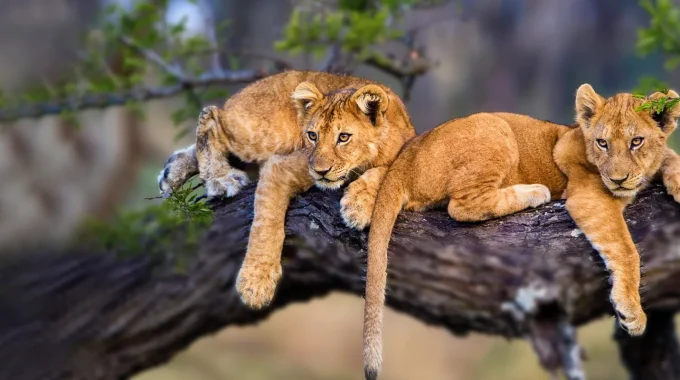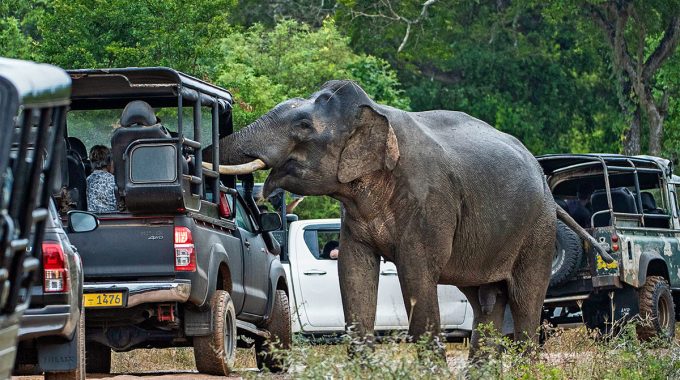Your Big African Safari Planner: What to Expect from the Top Safari Countries in 2025…
Do wildebeest sleep at night?
Do wildebeest sleep at night? – Yes, wildebeests do sleep at night in Kenya and Tanzania, but their sleep patterns are adapted to the demands of living in the wild, especially in the regions where they are part of the great migrations between these two countries. Both in Kenya and Tanzania, wildebeests face the pressures of predation, changing environments, and migration, so their sleep is generally light and intermittent.

Wildebeest Sleep in the Wild: Overview
Wildebeests (also known as gnus) are crepuscular and nocturnal animals, meaning they are most active during dawn and dusk, but they are also awake and moving at night. However, they do sleep during the night, albeit in a manner that reflects their need to remain alert to predators. Let’s break it down further, specifically in the context of Kenya and Tanzania’s wildlife habitats:
1. Sleep Habits in the Serengeti and Maasai Mara
- Serengeti National Park (Tanzania) and the Maasai Mara (Kenya) are both famous for being part of the wildebeest’s migration route. The wildebeest in these areas follow the Great Migration, a seasonal movement in which they travel long distances to find fresh grazing. They usually follow a circular route from the southern Serengeti plains in Tanzania, to the Maasai Mara in Kenya, and back again.
- Due to their constant movement and need for protection from predators like lions, hyenas, and leopards, wildebeests in these regions tend to have irregular sleeping patterns.
- Sleep Duration: Wildebeests sleep for short periods—usually between 4 to 6 hours in a 24-hour cycle, often in segments. They tend to rest during the cooler night hours, but it’s not uncommon for them to stay alert or move around during the night.
2. Nocturnal and Light Sleep
- Wildebeests are not known for long, deep sleep. Instead, they rest in short bursts. While they do sleep during the night, it’s usually light and intermittent. They often lie down to rest but remain vigilant to potential threats.
- At night, wildebeests can be seen lying down, but they tend to do so in groups, providing collective protection against predators. The presence of many animals together helps to alert the group to predators or other threats. Wildebeests’ strong sense of hearing and keen sense of smell help them detect predators, even in low light.
- Wildebeests might also sleep standing up, especially if they feel the need to quickly flee from danger.
3. Why Do They Sleep at Night?
- Cooler Temperatures: In regions like the Serengeti and Maasai Mara, the daytime temperatures can be harsh, especially during the dry season. At night, temperatures drop, making it a more comfortable time for wildebeests to rest.
- Predator Avoidance: Night is when many of the wildebeest’s main predators—such as lions and hyenas—are more active. Wildebeests have evolved to take light, intermittent rest during these times, but they are always ready to defend themselves or flee. As part of a herd, they benefit from the collective vigilance of the group.
- Migration and Grazing Cycles: Wildebeests in Kenya and Tanzania are primarily grazers, so they graze during the cooler parts of the day (early morning and late afternoon). During the night, they may rest but also engage in light foraging if needed, especially if they are migrating or following the herds in search of food.
4. Group Behavior and Vigilance
- Wildebeests are highly social animals, and they sleep as part of large, tightly packed groups. This behavior helps them detect predators more effectively. In a group, individuals take turns being more alert while others sleep. This communal vigilance is a key defense mechanism.
- They do not sleep alone; being part of the herd offers protection. If one animal detects danger, it can raise the alarm, and the whole group will spring into action.
5. Sleep During Migration
- The wildebeest’s migration between the Serengeti and Maasai Mara is a significant event, lasting for several months and covering long distances. During migration, wildebeests often travel at night, especially when crossing wide open areas or when moving to fresh grazing grounds.
- During this time, their sleep patterns can be even more fragmented as they are constantly on the move. They may take short naps while grazing, resting in the middle of their journey, or lying down briefly while in more protected areas.
6. Predation and Safety at Night
- At night, lions and hyenas (which are the primary nocturnal predators of wildebeests) are often most active, so the wildebeests must be particularly cautious.
- Wildebeests do not sleep deeply at night, and they may choose to rest in areas where they can easily flee if they detect predators. The herd structure is a powerful deterrent to predators, as the sheer number of wildebeests can confuse or overwhelm a predator trying to single out an individual.
- When predators are nearby, wildebeests will stand and move as a group, often bolting for safety. They communicate warnings through sounds, and even sleeping wildebeests can quickly be stirred into action if a threat is detected.
7. Nocturnal Adaptations
- While wildebeests are not strictly nocturnal, their behavior is adapted to nighttime survival. Their large eyes, which help them see in low light, and heightened sense of hearing make them capable of detecting predators at night.
- Wildebeests often position themselves on the outskirts of the herd to be more aware of their surroundings. They may alternate between resting and standing watch in a group, with some animals remaining alert while others take short naps.
Summary: Do Wildebeest Sleep at Night?
In both Kenya and Tanzania, wildebeests do sleep at night, but their sleep is typically short, light, and intermittent. They are crepuscular and sometimes nocturnal, meaning they are awake and moving during both dawn and dusk, but they also rest during the night, especially when temperatures are cooler.
Light, irregular sleep cycles punctuated by alert intervals help these animals survive, and they often sleep in groups to protect themselves from predators. The great migration in these regions further complicates their sleep, as they are constantly on the move, but they still manage to rest, though not deeply, in between foraging and traveling.



